The rising electricity bills have been a primary concern for households all over the country. In Arizona, electricity bills have been increasing at a steady rate for the past few years. In May 2024, the average electric bill in Arizona was nearly $164.46 per month, with an average monthly consumption of 1061 kWh.
One of the best ways to reduce electricity bills is by investing in a clean and green solution like solar generators. Jackery Solar Generators are designed to charge most household appliances like fan, refrigerators, ACs, etc., to reduce the overall dependence on the utility grid.
What Is The Average Electric Bill in Arizona?
The average electricity bill in Arizona increased from $138.13 in 2022 to $164.46 in 2024, marking a steady increase over the past few years. In summer, Arizona residents have to pay around $200 to $250 for electricity, depending on the appliances they use at home.
Arizona's constant heat is the main reason behind the higher-than-average bills. According to the latest data from EIA, Arizona's average electricity bill is $164.46 with an electricity rate of 15.5 cents per kWh, which is considerably higher than the overall US bill of $147.70.
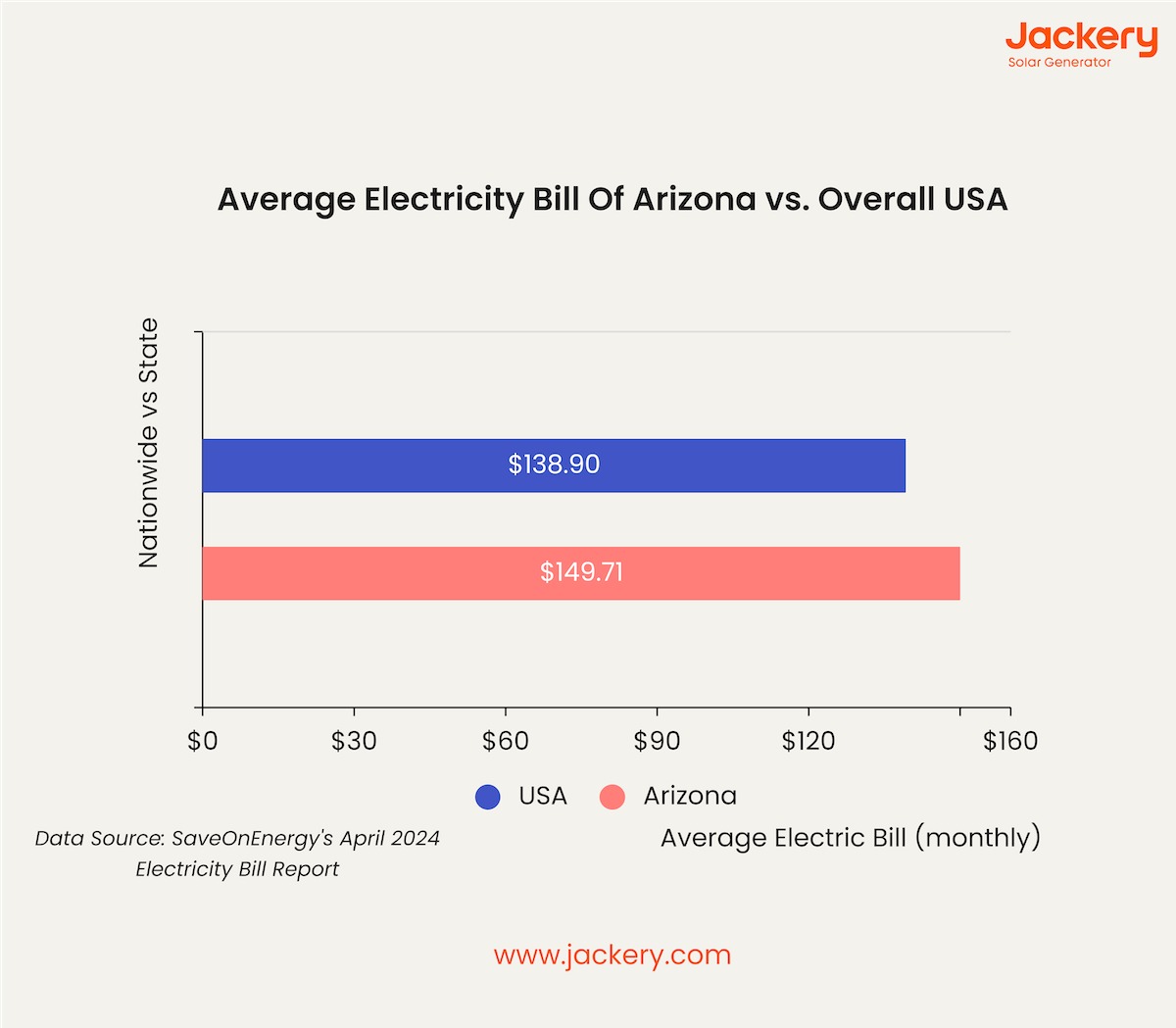
Here's a table revealing the average electricity bill of different US states, along with the average energy rates and monthly electricity consumption.
|
State |
Avg. Bill |
Avg. Rate |
Monthly Usage |
|
Arizona |
$164.46 |
15.50 ¢/kWh |
1061 kWh |
|
Utah |
$86.21 |
11.01 ¢/kWh |
783 kWh |
|
Texas |
$173.64 |
14.74 ¢/kWh |
1178 kWh |
|
Florida |
$151.43 |
13.63 ¢/kWh |
1111 kWh |
|
Colorado |
$102.00 |
14.74 ¢/kWh |
692 kWh |
Source: EIA
The cost of electric bills in Arizona has fluctuated over the past few years. Since most of Arizona's electricity comes from natural gas-fired plants, the overall cost of electricity increases. Generally, the average electricity bills in Arizona increase during the summertime when the demand for air conditioners is high.
What Are The Electricity Rates in Arizona?
Arizona has many electricity providers, including Arizona Public Service, UniSource Energy Services, Salt River Project, and Arizona Electric Power Cooperative. The choice of the best electricity provider in Arizona will depend on many factors, such as the plans offered, the kilowatt hours of electricity you use, and the time when you use most electricity. Let's explain them briefly:
Type of Plan
The electricity providers in Arizona offer different plans, such as fixed energy charge plans, TOU, saver choices, etc. The fixed energy charge is the most basic rate plan with three distinct tiers.
Customers drawing less power from the utility grid are charged the least cents per kWh compared to people drawing more. One benefit of this plan is that you don't have to worry about when you are using the electricity as the rate remains the same throughout the day.
Kilowatt-Hour Consumed
Residents in Arizona are charged for the kilowatt-hour they draw from the utility grid per month. The kWh consumption is generally higher in summer than in winter because air conditioners are used more frequently. It's essential to check the rate charged by the electricity provider and ensure it is more affordable than other utility providers.
Time of Electricity Usage
Many electricity providers offer TOU plans where the electric rate depends on the time of the day. For example, if you are using electricity during the on-peak or peak electricity hours, you'll have to pay a higher amount. On the other hand, the electricity providers charge less during the off-peak hours.
You can check the peak and off-peak electricity hours on the official website of the electricity provider and shift the use of heavy-duty appliances during the off-peak hours. This reduces the pressure on the utility grid and helps you control the electricity bills.
Some best ways to reduce electricity consumption during peak hours include installing a smart thermostat to control the usage of AC and investing in a solar generator to charge appliances with free solar energy.
Here is a table that compares the average electricity rate and bill charged by different electricity providers in Arizona.
|
Provider |
Residential Rate (¢) |
Residential Average Bill ($) |
|
Arizona Public Service |
15.43 |
156.49 |
|
Salt River Project |
12.54 |
149.21 |
|
Tucson Electric Power |
15.22 |
124.12 |
|
UNS Energy Corporation |
13.76 |
123.77 |
|
Trico Electric Cooperative |
14.22 |
134.09 |
|
Mohave Electric |
12.55 |
119.03 |
|
Sulphur Springs Valley Electric Cooperative |
16.25 |
117.27 |
Source: Find Energy
Generally speaking, the average residential price per kWh in Arizona is 15.50 cents, with an average monthly electricity bill of $164.46. The commercial electric rate in Arizona is 12.84 cents per kWh, which is lower than that of residential. The industrial electric rate is 7.77 cents per kWh, which is lower than that of residential and commercial.
What Factors Influence That Average Electric Bill in Arizona?
The average electric rate in Arizona is continuously rising, which eventually increases household monthly bills. While each household pays for the electricity they consume per month, there are some additional factors that can impact the overall costs.
Weather or Climate: Extreme hot or cold temperatures in the summer season can lead to increased usage of cooling appliances like air conditioners or heating appliances like space heaters. This can increase energy usage, leading to increased electricity market prices and bills.
Home Efficiency: Your home's electricity bill is determined by the amount of electricity it consumes every month. Using energy-efficient appliances will reduce your overall electricity consumption and bills.
Fuel Costs: When there is a high demand for electricity, the prices of petroleum fuel and natural gas increase. The higher fuel prices directly result in higher electricity generation costs.
Service Costs: Your bill includes a monthly service charge to recover the additional expenses like meters, poles, system maintenance, and other costs that are necessary to provide electric service.
How Solar Helps to Lower The Electric Bill in Arizona?
Whether you want to slash your electricity bills in half or completely eliminate energy usage, there's nothing better than investing in solar energy. Solar generators use free solar energy to generate usable electricity and charge appliances at home, reducing the amount you draw from the utility grid. As a result, it can lower electricity bills.
Your potential savings with solar will depend on two main factors: your current electricity bills and the percentage of electric bills you want to offset with solar. In Arizona, you would typically need a 7.6 kW solar panel system to offset annual electricity consumption, and you would generally pay around $18000 for a 7.6 kW solar panel system.
If we assume a 1.4% annual increase in electricity prices, you could save $2200 in the first year, $11,200 in five years, $23,100 in ten years, and a whopping $49,700 in twenty years.

Note: This is an average example, and the exact number will depend on your home's electricity consumption.
The future of energy is bright and is becoming a mainstream solution to transform the way we power our homes. It reduces household electricity bills, decreases the carbon footprint, and preserves the planet. Jackery Solar Generators are robust charging solutions to power a wide range of household appliances for long hours. They are great alternatives to home solar panel systems and do not require any heavy installation.
Jackery Solar Generators for Lowering Your Electric Bills
Jackery is a renowned solar brand that manufactures and sells solar generators, power stations, and solar panels. The Jackery Solar Generators combine portable Jackery Explorer Portable Power Stations and foldable Jackery SolarSaga Solar Panels to charge most household appliances and reduce electricity bills.
When sunlight falls on the monocrystalline silicon solar cells of Jackery SolarSaga Solar Panels, it converts solar energy into DC electricity. This electricity is then passed to the pure sine wave inverter of the Jackery Explorer Portable Power Station, which converts DC to AC electricity and charges household appliances like washing machines, refrigerators, ACs, coffee makers, etc.
Jackery Solar Generator 3000 Pro
The Jackery Solar Generator 3000 Pro has a large NMC battery of 3024 Wh capacity that supports 99% of household appliances. It can supply steady electricity to small and large appliances, such as refrigerators, space heaters, and air conditioners. The Jackery Explorer 3000 Pro Portable Power Station can be charged with 6*Jackery SolarSaga 200W Solar Panels in only 3.5 hours. Thus, it helps you enjoy off-grid living and reduces the high electricity bills in Arizona.
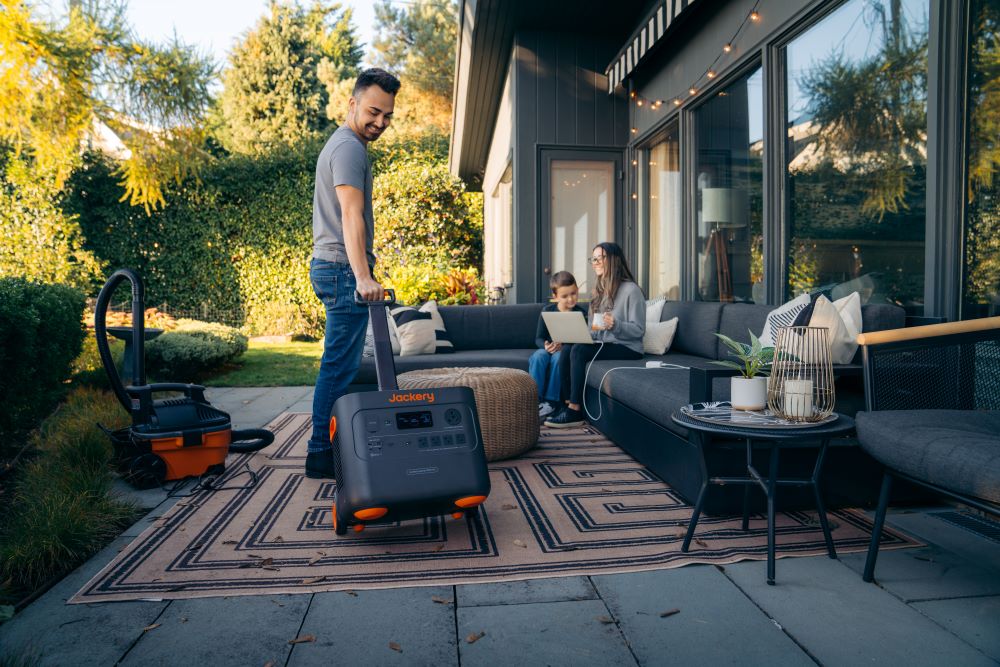
|
|
Solar Generator 3000 Pro |
|
Capacity |
3024 Wh |
|
Battery Cell |
NMC |
|
Cycle Life |
2000 cycles to 70%+ capacity |
|
Recharging Methods |
Solar Recharging: 3.5 H (6*Jackery SolarSaga 200W Solar Panels) Car Recharging: 35 H Wall Recharging: 2.4 H |
|
Output Ports |
AC Output (x1): 120 V~ 60 Hz 25 A Max AC Output (x3): 120 V~ 60 Hz 20 A Maximum USB-C Output (x2): 100 W Maximum, 5 V⎓3 A, 9 V⎓3 A, 12 V⎓3 A, 15 V⎓3 A, 20 V⎓5 A |
|
Working Hours |
Dishwasher (1500 W): 1.7 H TV (150 W): 17.1 H Hair Dryer (1800 W): 1.4 H AC (1000 W): 2.6 H Washing Machine (400 W): 6.4 H Microwave (1000 W): 2.6 H |
|
Customer Review |
“The 3000 Pro will be our backup power for the home fridge and chest freezer. I have already tested it, and it has 3 days of power for the fridge and 5+ days for the freezer. Plugged in our radiant heater and charged for 1.5 hours. Only took 2.1 hours of wall plug for a full recharge.” — J D. |
Jackery Solar Generator 2000 Plus
The Jackery Solar Generator 2000 Plus is best known for its expandable nature. The LiFePO4 battery has a capacity of 2042.8 Wh, which can be expanded to a whopping 24 kWh for charging most household appliances for long hours. If you want to offset a significant part of your electricity bill, the Jackery Solar Generator 2000 Plus seems like an ideal choice. The battery backup has built-in wheels and a sturdy handle to move the generator from one place to another.

|
|
Solar Generator 2000 Plus |
|
Capacity |
2-24 kWh |
|
Battery Cell |
LiFePO4 |
|
Cycle Life |
4000 cycles to 70%+ capacity |
|
Recharging Methods |
Solar Recharging: 2 H (6*Jackery SolarSaga 200W Solar Panels) Car Recharging: 25 H Wall Recharging: 2 H |
|
Output Ports |
AC Output (×4) 120 V~ 60 Hz, 20 A Maximum AC Output (×1) 120 V~ 60 Hz, 25 A Maximum USB-A Output (x2): Quick Charge 3.0, 18 W Maximum USB-C Output (x2): 100 W Maximum, (5 V, 9 V, 12 V, 15 V, 20 V up to 5 A) |
|
Working Hours |
Dishwasher (1500 W): 1.2 H TV (150 W): 11.6 H Hair Dryer (1800 W): 1 H Water Heater (1125 W): 1.5 H Washing Machine (400 W): 4.3 H Microwave (1000 W): 1.7 H |
|
Customer Review |
“Very good quality, the battery lasts a very long time. Very easy to move around with the built-in tires. Love the upgradeability. The best solar generator I have ever had.” — Marc. |
Jackery Solar Generator 2000 Plus Kit (4kWh)
The Jackery Solar Generator 2000 Plus Kit (4kWh) is a sizeable battery-powered generator with a capacity of 4085.6 Wh. It can charge 99% of household appliances for long hours, helping you reduce the average electric bills in Arizona. It consists of 1*Jackery Explorer 2000 Plus Portable Power Station, 1*Jackery Battery Pack 2000 Plus, and 2*Jackery SolarSaga 200W Solar Panels to offer a complete off-grid charging solution.

|
|
Solar Generator 2000 Plus Kit (4kWh) |
|
Capacity |
2-24 kWh |
|
Battery Cell |
LiFePO4 |
|
Cycle Life |
4000 cycles to 70%+ capacity |
|
Recharging Methods |
Solar Recharging: 2 H (6*Jackery SolarSaga 200W Solar Panels) Car Recharging: 25 H Wall Recharging: 2 H |
|
Output Ports |
AC Output (×4) 120 V~ 60 Hz, 20 A Maximum AC Output (×1) 120 V~ 60 Hz, 25 A Maximum USB-A Output (x2): Quick Charge 3.0, 18 W Maximum USB-C Output (x2): 100 W Maximum, (5 V, 9 V, 12 V, 15 V, 20 V up to 5 A) |
|
Working Hours |
Dishwasher (1500 W): 2.4 H TV (150 W): 23.1 H Hair Dryer (1800 W): 1.9 H Water Heater (1125 W): 3 H Washing Machine (400 W): 8.6 H Microwave (1000 W): 3.4 H |
|
Customer Review |
“I’m impressed with the quality and design (even the packaging) of the Jackery products and am looking forward to replacing a gas-guzzling generator(s). One unit feature that I particularly like is the expansion capabilities. Well done, Jackery.” — Randall MacPherson. |
How to Lower Your Electric Bills in Arizona?
The rising cost of electricity in Arizona is the main reason why many people are looking for different ways to reduce their bills. If you are wondering the same, here are some simple suggestions on how to save on electricity bills in Arizona.
Monitor Your Usage
One way to reduce the high bills is to reduce the overall electricity consumption. For example, start by monitoring which appliances or activities contribute to most of the electricity bills. In some cases, reducing the daily usage of specific appliances can significantly lower electricity bills.
Upgrade the Appliances
Older appliances generally draw more electricity than newer ones. Investing in more energy-efficient appliances that are Energy Star-rated can reduce overall electricity bills.
Install Energy Efficient Appliances
If your home has old-style incandescent bulbs, you are wasting a hefty amount on electricity bills. Replacing these bulbs with LED or CFL bulbs can make a massive difference in total energy consumption. LEDs and CFLs are designed to consume 80% less energy and can last 10 times longer than traditional bulbs.
Use Jackery Solar Generators
Investing in solar generators can help you reduce the total electricity bills as they generate power from free solar energy and charge home appliances. Jackery Solar Generators can reduce your reliance on the utility grid by collecting and converting free sun rays into AC electricity. The larger home battery backups like Jackery Solar Generator 2000 Plus and Jackery Solar Generator 3000 Pro can charge 99% of household appliances, helping you save money on electricity bills and switch to clean energy.
Arizona Average Electric Bill FAQs
What size of solar generator do I need for my house in Arizona?
The size of the solar generator ideal for your Arizona home will depend on the total wattage consumption of the appliances you are charging simultaneously and for how long.
Let's take an example to understand:
Suppose you are charging a mini-refrigerator (400 W), AC (1000 W), and some LED lights (10 W) simultaneously with the help of the Jackery Solar Generator 3000 Pro. The working hours can be calculated using the below formula:
Working Time = Battery Capacity * 0.85 / Operating Wattage of Appliances = 3024 Wh * 0.85 / 1410 W = 1.8 H.
The battery capacity of the generator is multiplied by 0.85 since there will be some power loss while charging the appliances.
Why is my electric bill so high in Arizona?
Arizona's electricity providers, like AEPCO, use natural gas and coal to produce electricity. As the cost of natural gas and coal increase with each passing year, Arizona's electric rates rise. However, some other factors can affect the overall costs, such as capital credit refunds and kilowatt usage.
What is the average cost of living in Arizona per month?
According to the Bureau of Economic Analysis, the average cost of living in Arizona is $44,875 per year, which includes housing, utility, groceries and food, transportation, healthcare, child care, and other miscellaneous expenses. Here's a table revealing the monthly and yearly cost of living in Arizona for different categories:
|
Category |
Average Cost in Arizona |
|
Housing |
$973 - $2169 per month |
|
Electricity |
$149.71 per month |
|
Other Utilities |
$250 - $300 per month |
|
Health Care |
$6,828 per year |
|
Food and Beverages (non-restaurant) |
$3,346 per year |
|
Gas and Energy Goods |
$1,061 per year |
|
All Other Personal Expenditures |
$25,457 per year |
Source: Personal Consumption Expenditures by State, 2021 | U.S. Bureau of Economic Analysis (BEA)
What state has the highest average electric bill?
Hawaii has the highest household electricity rate, 44.14 cents per kWh, and the average monthly electric bill, $227.32.
How much is the average electric bill in Arizona during the summer?
The average electric bill in Arizona during the summer season lies between $200 and $250, which is higher than the average residential bill of $147.70.
Final Thoughts
On average, Arizona residents spend about $164.46 per month on electricity, which adds up to $1973.52 per year. This means a significant portion of monthly income goes into paying for electricity. Residents can lower their electricity bills by investing in solar energy or portable solar generators.
Jackery Solar Generators work by converting the free solar energy into sunlight. They reduce your reliance on the grid and help you save more on the average electric bill in Arizona in the long run. Additionally, they come with Jackery SolarSaga Solar Panels, so you can charge the battery backups when enough sunlight is available and keep appliances charged for long hours.





































































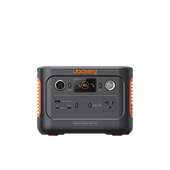

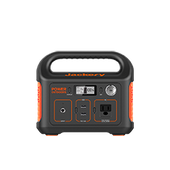

















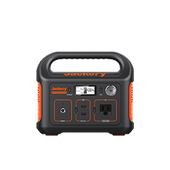


















![What Is The Average Electric Bill in Arizona [2024 Updated]](http://www.jackery.com/cdn/shop/articles/average_electric_bill_in_arizona_by_jackery.jpg?v=1712459792)






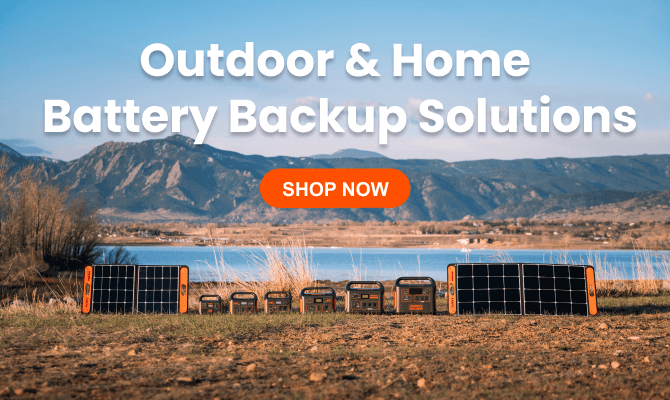
Leave a comment